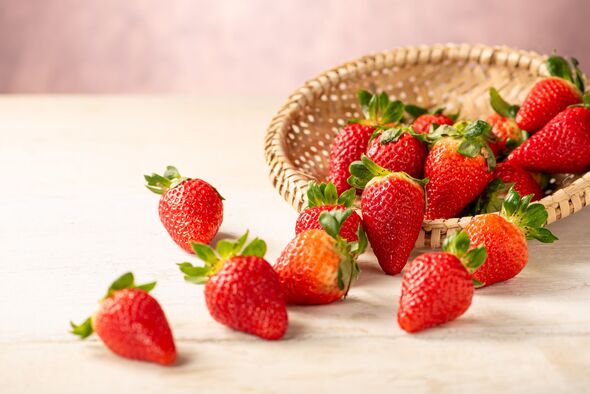Lifestyle
Wash Strawberries Right: Use Baking Soda for Longer Freshness

As strawberry season peaks, consumers are reminded of the importance of properly washing these popular fruits to enhance their freshness and safety. Strawberries are often treated with pesticides, which can leave residues that affect taste and health. Even organic strawberries can harbor soil, insects, or handling residues that necessitate washing.
To ensure strawberries remain fresh for longer in the refrigerator, a new washing technique using a common household item is gaining attention. While some individuals opt for white vinegar to cleanse their fruit, this method can sometimes leave an unpleasant taste if not rinsed thoroughly. A more effective alternative is baking soda, which can effectively remove pesticide residues without altering the fruit’s flavor.
How to Wash Strawberries with Baking Soda
To wash strawberries properly, dissolve one teaspoon of baking soda in several cups of cool, clean water. Pour the mixture into a large bowl, then add the strawberries. Gently swish the strawberries through the baking soda solution for approximately five minutes. After soaking, rinse the berries with fresh water to eliminate any remaining baking soda residue.
Once rinsed, it is crucial to dry the strawberries with a paper towel before storing them in the refrigerator. Keeping fruit dry helps prevent mold growth. If consumption is not immediate, it’s advisable to store the strawberries in their original containers until ready to wash. After washing, transferring them to a container lined with paper towels can help absorb any excess moisture.
Maximizing Freshness
Proper storage is key to maintaining the freshness of strawberries. When placed in the refrigerator, it is important to ensure they are kept dry and stored in a way that allows for air circulation. This practice extends their shelf life and enhances their quality when consumed.
In summary, using baking soda as a washing agent can significantly improve the freshness of strawberries while ensuring safety from pesticide residues. By adopting this simple technique, consumers can enjoy their strawberries for longer periods, enhancing both flavor and health benefits.
-

 Health3 months ago
Health3 months agoNeurologist Warns Excessive Use of Supplements Can Harm Brain
-

 Health4 months ago
Health4 months agoFiona Phillips’ Husband Shares Heartfelt Update on Her Alzheimer’s Journey
-

 Science2 months ago
Science2 months agoBrian Cox Addresses Claims of Alien Probe in 3I/ATLAS Discovery
-

 Science2 months ago
Science2 months agoNASA Investigates Unusual Comet 3I/ATLAS; New Findings Emerge
-

 Science2 months ago
Science2 months agoScientists Examine 3I/ATLAS: Alien Artifact or Cosmic Oddity?
-

 Entertainment2 months ago
Entertainment2 months agoLewis Cope Addresses Accusations of Dance Training Advantage
-

 Entertainment5 months ago
Entertainment5 months agoKerry Katona Discusses Future Baby Plans and Brian McFadden’s Wedding
-

 Science2 months ago
Science2 months agoNASA Investigates Speedy Object 3I/ATLAS, Sparking Speculation
-

 Entertainment5 months ago
Entertainment5 months agoEmmerdale Faces Tension as Dylan and April’s Lives Hang in the Balance
-

 World3 months ago
World3 months agoCole Palmer’s Cryptic Message to Kobbie Mainoo Following Loan Talks
-

 World4 weeks ago
World4 weeks agoBailey and Rebecca Announce Heartbreaking Split After MAFS Reunion
-

 Science2 months ago
Science2 months agoNASA Scientists Explore Origins of 3I/ATLAS, a Fast-Moving Visitor









